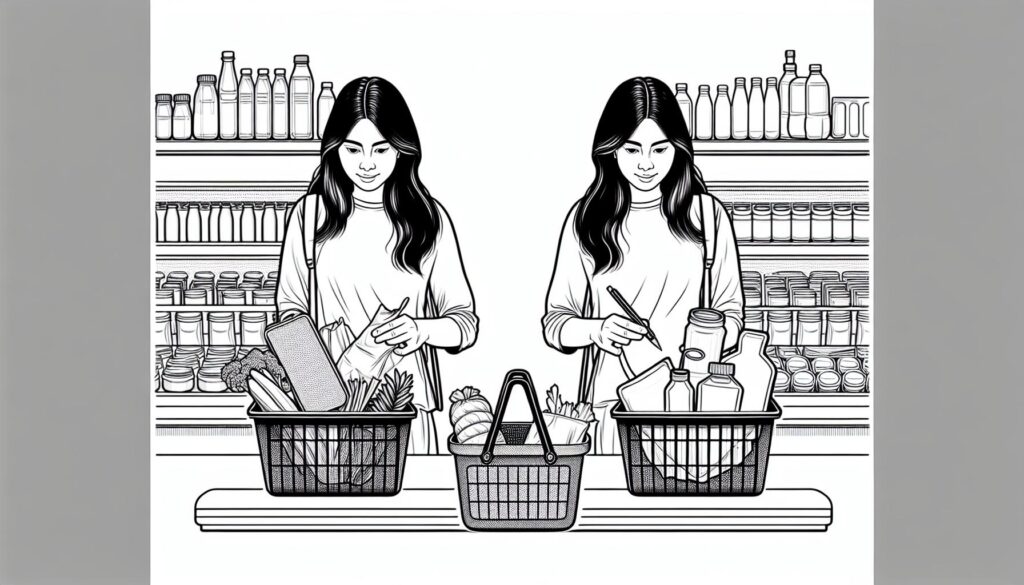Are you looking for eco-friendly packaging options that are both sustainable and practical for your daily needs? I’ve got you covered! In this article, I’ll be diving into the world of eco-friendly packaging solutions that not only help reduce waste but also make a positive impact on the environment. Let’s explore how we can make a difference, one package at a time.
From biodegradable materials to reusable containers, there are plenty of innovative ways to embrace sustainability in our packaging choices. Join me as we uncover the latest trends and tips for incorporating eco-friendly packaging solutions into your everyday life. Together, we can take small steps towards a greener future while still enjoying the convenience of modern packaging options.
Benefits of Eco-Friendly Packaging
When it comes to eco-friendly packaging, the benefits extend far beyond just being environmentally conscious. Here are some key advantages:
- Reduces environmental impact: By using sustainable materials and reducing waste, eco-friendly packaging helps minimize the burden on the environment.
- Promotes sustainability: Opting for eco-friendly packaging solutions supports sustainable practices and helps preserve natural resources for future generations.
- Enhances brand image: Consumers are increasingly drawn to brands that prioritize eco-friendliness, showcasing your commitment to social responsibility.
- Improves product appeal: Eco-friendly packaging can enhance the visual appeal of your products, making them stand out on the shelves.
- Cost-effective: Contrary to common belief, eco-friendly packaging can be cost-effective in the long run, potentially reducing expenses associated with waste management.
As I’ve seen in my research, embracing eco-friendly packaging solutions not only benefits the environment but also offers tangible advantages for businesses and consumers alike.
Types of Biodegradable Materials
When it comes to eco-friendly packaging, biodegradable materials play a crucial role in reducing environmental impact. Here are some common types of biodegradable materials used in packaging:
- Biodegradable plastics: Made from renewable resources, these plastics break down naturally into non-toxic components under appropriate conditions.
- Compostable materials: These materials can fully break down into natural elements in a compost environment, leaving no toxicity in the soil.
- Bio-based materials: Derived from renewable biomass sources such as corn or sugarcane, these materials offer an alternative to traditional petroleum-based plastics.
- Paper and cardboard: Easily recyclable and biodegradable, paper and cardboard packaging are popular choices for sustainable packaging solutions.
Opting for packaging materials that are biodegradable not only reduces waste but also supports a healthier environment for future generations.
Reusable Packaging Options
When considering sustainable packaging solutions, reusable packaging stands out as a champion in reducing waste. Utilizing containers and bags that can be reused multiple times is not only environmentally friendly but also cost-effective for businesses and individuals alike. Here are some popular reusable packaging options:
- Glass containers: Durable and versatile, they are great for storing food and beverages.
- Metal tins: Ideal for cosmetics, spices, and other dry goods, offering a stylish and reusable alternative to plastic packaging.
- Fabric bags: Perfect for groceries and shopping, these sturdy bags reduce the need for single-use plastic bags.
- Bento boxes: These compartmentalized lunch boxes are excellent for meal prep and reduce the reliance on disposable containers.
Choosing Reusable Packaging Options not only minimizes the environmental impact but also promotes a culture of sustainability in our daily lives.
Impact of Eco-Friendly Choices on the Environment
Making eco-friendly choices doesn’t just benefit us; it also has a positive impact on the environment. Here are some key points to consider:
- Reduction of plastic waste: Opting for biodegradable materials helps in reducing the amount of plastic waste that ends up in landfills or oceans.
- Lower carbon footprint: By using sustainable packaging solutions, we can lower greenhouse gas emissions and contribute to combating climate change.
- Conservation of resources: Choosing eco-friendly packaging promotes the conservation of natural resources such as water, energy, and raw materials.
- Protection of wildlife: Eco-friendly options like compostable materials reduce the risk of harm to wildlife that can ingest or get entangled in traditional packaging materials.
- Improvement of soil quality: When biodegradable packaging breaks down, it enriches the soil, enhancing soil quality for agricultural purposes.
- Preservation of ecosystems: By opting for reusable packaging, we can help preserve delicate ecosystems that are impacted by excessive waste disposal practices.
In essence, by embracing eco-friendly packaging solutions in our daily lives, we are not only reducing waste but also playing a vital role in protecting our planet for future generations.
Tips for Implementing Sustainable Packaging Practices
When it comes to incorporating eco-friendly packaging into your daily routine, there are several practical steps that can make a significant impact:
- Opt for Recyclable Materials: Choosing packaging that is easily recyclable helps in reducing waste and conserving resources. Look for the recycling symbol on packaging to ensure it can be recycled.
- Use Biodegradable Options: Biodegradable packaging breaks down naturally, reducing the amount of waste that ends up in landfills and oceans. Compostable packaging is a great alternative if you have access to composting facilities.
- Avoid Excessive Packaging: Be mindful of over-packaged products. Opt for items with minimal packaging or those packaged in materials that are easy to recycle or compost.
- Support Sustainable Brands: Look for companies that prioritize sustainability in their packaging practices. Supporting these brands encourages more businesses to adopt eco-friendly solutions.
- Reuse and Upcycle: Get creative with how you reuse packaging materials. Glass jars, cardboard boxes, and paper bags can often be repurposed for storage, organization, or DIY projects instead of being thrown away.
Taking these steps not only benefits the environment but also helps to reduce the demand for single-use plastics and other harmful packaging materials. By making these small changes in our daily lives, we can all play a part in creating a more sustainable future.
Key Takeaways
- Eco-friendly packaging offers various benefits such as minimizing environmental impact, promoting sustainability, enhancing brand image, improving product appeal, and potentially being cost-effective.
- Biodegradable materials, including biodegradable plastics, compostable materials, bio-based materials, paper, and cardboard, are crucial for reducing waste and supporting a healthier environment.
- Reusable packaging options like glass containers, metal tins, fabric bags, and bento boxes are not only environmentally friendly but also cost-effective choices for businesses and consumers.
- Making eco-friendly choices has a positive impact on the environment by reducing plastic waste, lowering carbon footprint, conserving resources, protecting wildlife, improving soil quality, and preserving ecosystems.
- Practical tips for implementing sustainable packaging practices include opting for recyclable materials, using biodegradable options, avoiding excessive packaging, supporting sustainable brands, and reusing and upcycling packaging materials to reduce the demand for single-use plastics.
Conclusion
Implementing eco-friendly packaging solutions in everyday life is crucial for reducing waste and supporting a sustainable future. By choosing recyclable and biodegradable materials, avoiding excessive packaging, and reusing packaging materials, individuals can make a significant impact on the environment. Supporting sustainable brands further enhances these efforts, contributing to a greener planet. Small changes in packaging practices can lead to a big difference in the long run. Let’s continue to prioritize eco-conscious choices in packaging to create a healthier environment for ourselves and future generations.



